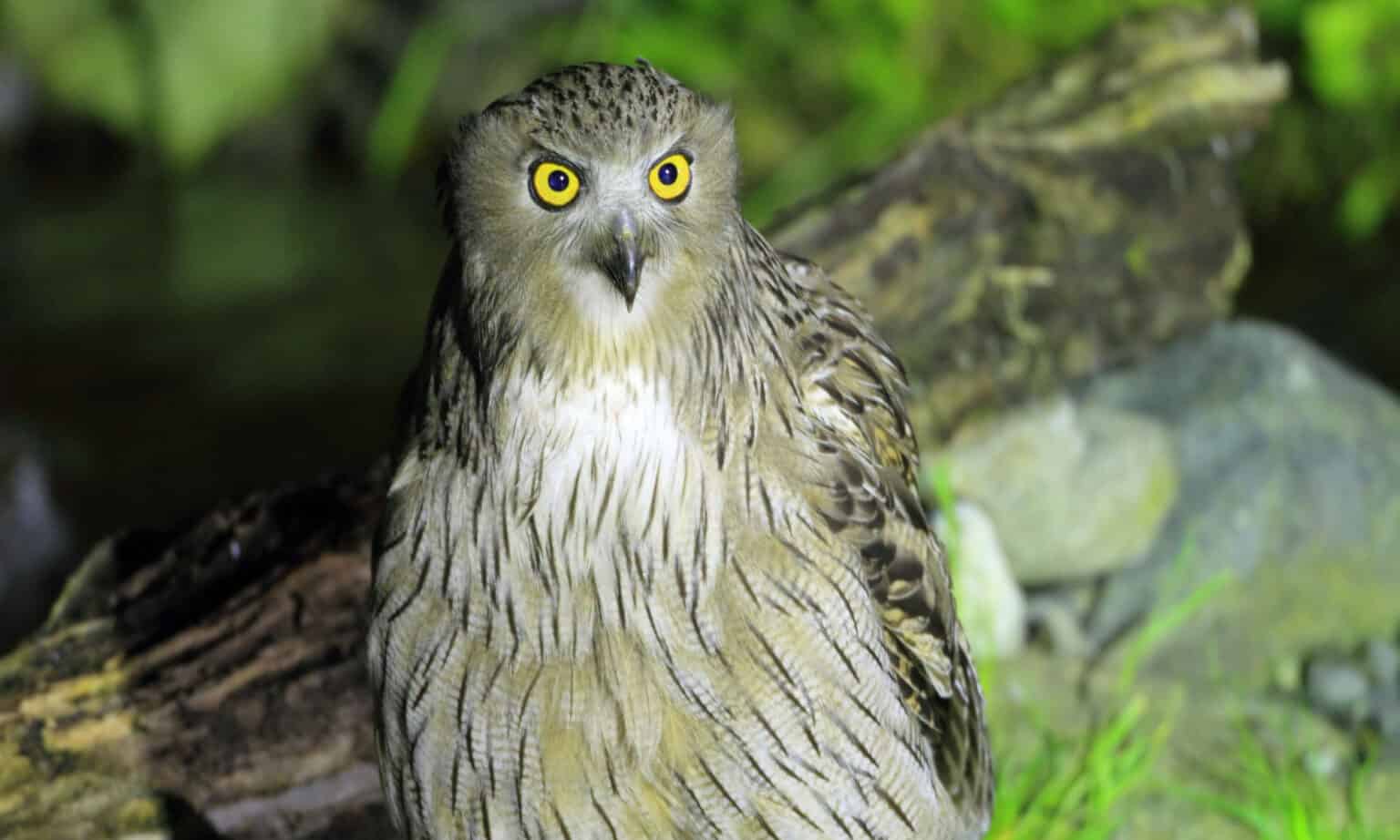The avian world is replete with creatures of mesmerizing beauty and formidable prowess. Among these, owls stand as paragons of nocturnal mastery, their silent flight and piercing gaze inspiring both awe and a healthy dose of trepidation. While the Eurasian Eagle-Owl often claims the mantle of the world’s largest owl, let’s delve into the shadowy realm of its formidable cousin, the Blakiston’s Fish Owl (Bubo blakistoni). This colossal creature, a denizen of the Far East’s riparian zones, truly embodies the apex of avian predation.
A Colossus of the Canopy: Size and Stature
The Blakiston’s Fish Owl is not merely large; it is impressively robust. Its wingspan can stretch to a staggering 6 feet, rivaling some eagles. They are truly massive birds. An adult can stand nearly three feet tall, a veritable feathered giant when perched amidst the boughs of its riverside domain. This sheer size advantage is not merely aesthetic; it is intrinsically linked to its lifestyle as a specialized piscivore, allowing it to subdue substantial prey.
A Face Framed by Ferocity: Distinctive Features
Beyond its considerable dimensions, the Blakiston’s Fish Owl presents a visage of raw power. Its facial disc, the arrangement of feathers around the face that helps focus sound, is less pronounced than in many owl species, lending it a somewhat sterner, more hawkish countenance. Prominent ear tufts, which are merely feathers and not related to hearing, accentuate its already imposing presence. But the true windows to its soul, its eyes, are a piercing yellow, holding a glint of predatory intent that can unsettle even the most seasoned ornithologist. They reflect the untamed wilderness from whence they came.
Rivers of Predation: A Specialized Hunter
Unlike many owls that primarily target terrestrial prey, the Blakiston’s Fish Owl has carved out a niche as a proficient angler. Its preferred habitat consists of cold, fast-flowing rivers and streams, primarily in Russia, China, and Japan. Fish constitute the bulk of its diet, particularly salmonids. Equipped with zygodactyl feet – two toes pointing forward and two pointing backward – and razor-sharp talons, it can snatch slippery prey from the water with devastating efficiency. They can be quite successful hunters. Their adaptations make them formidable predators.
Beyond Fish: An Opportunistic Carnivore
While fish are its mainstay, the Blakiston’s Fish Owl is not a culinary purist. It exhibits a degree of opportunistic carnivory, supplementing its piscine diet with crustaceans, amphibians, waterfowl, and even small mammals when the opportunity arises. This adaptability is crucial for survival in regions where fish populations may fluctuate seasonally. Their diet is varied, ensuring survival through leaner times.
A Voice in the Void: Vocalizations and Communication
The call of the Blakiston’s Fish Owl is a haunting duet, a deep, resonant “hoo-hoo” that reverberates across the river valleys during the breeding season. These vocalizations serve not only to attract mates but also to establish and defend territories. The calls are lower in pitch than most owls, befitting their large size and the wild environment they inhabit. They are the harbingers of the night in their domain.
A Precarious Perch: Conservation Status
Sadly, this magnificent owl faces a multitude of threats, placing it on the precipice of endangerment. Habitat loss due to deforestation and river degradation, coupled with declining fish stocks and accidental entanglement in fishing nets, have all contributed to its dwindling numbers. Conservation efforts are underway, focusing on habitat protection, sustainable fishing practices, and raising awareness among local communities. The future of this apex predator hangs in the balance, a poignant reminder of humanity’s impact on the natural world.
A Symbol of the Wild: The Blakiston’s Fish Owl’s Allure
The Blakiston’s Fish Owl is more than just a large bird; it is an emblem of the untamed wilderness, a testament to the power and resilience of nature. Its existence reminds us of the intricate web of life and the importance of preserving the delicate ecosystems upon which all creatures, including ourselves, depend. The owl’s very presence is a symbol of a healthy ecosystem. Protecting the Blakiston’s Fish Owl means safeguarding a legacy for future generations, ensuring that the haunting call of this magnificent creature continues to echo through the river valleys of the Far East.
Echoes in Culture: A Revered Creature
In some indigenous cultures of the regions it inhabits, the Blakiston’s Fish Owl holds a place of reverence, often associated with wisdom, protection, or even spiritual power. The Ainu people of Japan, for example, consider the owl a Kamuy, or divine being. Such cultural significance underscores the inherent value of this species and the importance of fostering a harmonious relationship between humans and the natural world.
